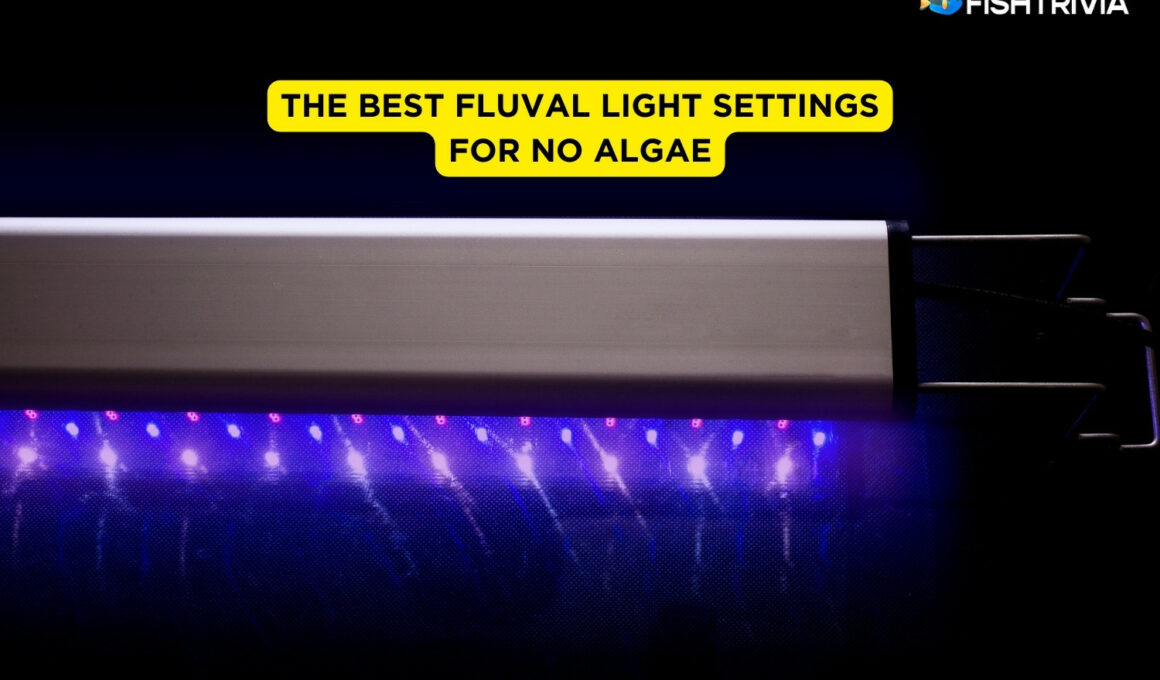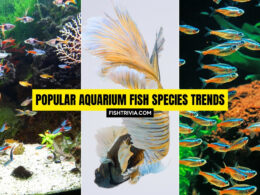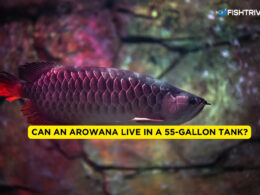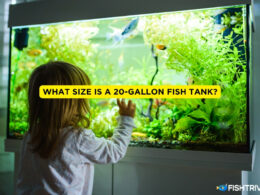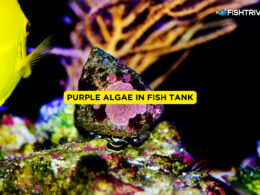In this article Show
As an experienced fishkeeper, I’m well acquainted with the balance it takes to maintain a thriving aquatic ecosystem. I can’t stress enough the importance of proper lighting in our aquariums. It’s not just about aesthetics; the right lighting promotes healthy growth and minimizes unwanted nuisances, like algae.
Incorrect light settings are a common cause of unsightly algae blooms. While it’s true that little algae can be beneficial—indicating a healthy tank—too much can harm your aquatic plants and animals. And let’s face it, a tank overrun by algae just doesn’t look good.
Luckily, using the right lighting system, like Fluval LED lights, and setting them up correctly can help prevent excessive algae growth.
In this post, we’ll discuss the ideal Fluval light settings to maintain a healthy and algae-free aquarium. You’ll find this guide helpful if you’re a beginner or have been in the hobby for years like me. So, let’s dive in!
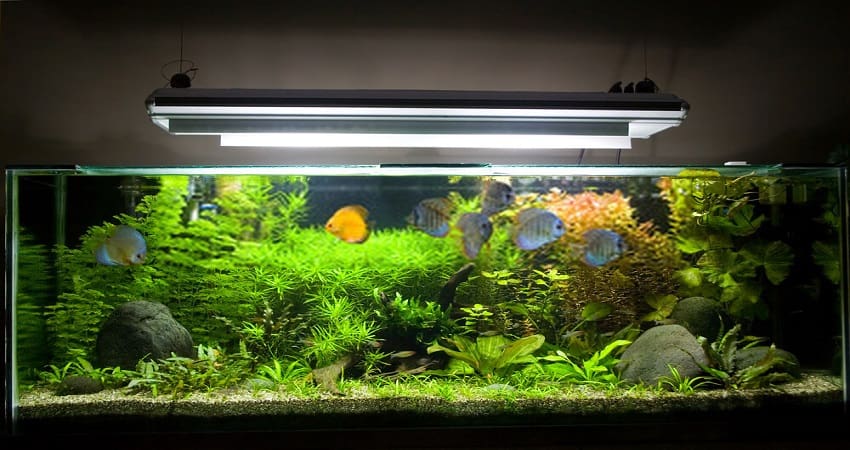
The Basics Of Aquarium Lighting
Understanding the basic principles of aquarium lighting is crucial to ensure the health of your aquatic ecosystem. Proper lighting not only makes your tank visually appealing but also impacts the growth and behavior of the aquatic life within.
First, let’s talk about the balance in aquarium lighting. Think of it as Goldilocks’ porridge—it needs to be just right. Too much light can lead to unwanted algae growth, while too little light can stifle the growth of your plants and affect fish behavior. As an experienced fish keeper, I’ve learned that achieving this balance is key to a thriving aquarium.
Next is the spectrum of light. Aquarium lights come in a variety of spectrums, each serving a different purpose. For instance, red and blue light spectrums are beneficial for photosynthesis in plants. But remember, algae also use these spectrums for growth, so careful management is necessary.
The intensity of your light is another factor to consider. Higher intensity can promote faster growth of both plants and algae. Therefore, the light intensity should match the needs of your specific tank setup and inhabitants.
Finally, let’s discuss the photoperiod or the duration your aquarium is exposed to light each day. This needs to mimic natural conditions as closely as possible. A photoperiod of 8 to 10 hours is a common recommendation, but adjustments may be needed depending on the specifics of your aquarium.
Understanding Algae And Its Causes
Algae: every aquarium owner has likely dealt with it at some point. Although a little can contribute to the natural ecosystem of your tank, too much becomes problematic. So, what triggers the overgrowth of this green menace?
At its core, algae is a plant-like organism that thrives under certain conditions. It performs photosynthesis, converting light and carbon dioxide into energy, while also consuming nutrients such as nitrate and phosphate present in the water. Now, let’s explore the main causes of algae growth in aquariums.
1. Excessive Light
As with any photosynthetic organism, algae love light. When your aquarium is exposed to too much light or poor-quality light, it can spur rapid algae growth. Hence, it’s crucial to strike a balance in both the duration and quality of light your aquarium receives.
2. Nutrient Imbalance
Overfeeding your fish or neglecting regular water changes can lead to an accumulation of nutrients, providing a fertile ground for algae. Algae consume these nutrients to grow, and without competition from other plants, they can quickly take over.
3. Poor Maintenance
Skipping on routine maintenance like water changes, filter cleaning, or overstocking your aquarium can contribute to water quality issues, indirectly promoting algae growth.
4. Poor Flow and Oxygenation
Low water movement can lead to “dead spots” where organic matter accumulates, eventually breaking down into nutrients that fuel algae growth.
It’s important to note that these factors often work in combination, creating an environment that’s perfect for algae to thrive.
The Best Fluval Light Settings for No Algae
Fluval LED lights are well-respected in the aquarium community for their versatility and adjustability. To create a vibrant, algae-free environment, let’s dive into the ideal settings.
1. Adjusting Light Intensity
Start with a medium light intensity setting – around 50%. Observe your aquarium for any changes in algae growth or the health of your plants and fish.
You can adjust the intensity up or down based on your observation, but remember, more light is not always better. The goal is to find a sweet spot that supports your plants and fish but doesn’t promote algae growth.
2. Tuning the Light Spectrum
Fluval LED lights offer the ability to customize the color spectrum. While blue and red light are essential for plant growth, they also promote algae.
Therefore, a balanced spectrum that mimics natural sunlight—rich in green and yellow light—is a good starting point. You may need to experiment and adjust this based on your specific setup and the needs of your plants and fish.
3. Setting the Photoperiod
The duration your light stays on plays a significant role in controlling algae. A typical recommendation is to start with an 8 to 10-hour photoperiod, adjusting as needed based on your observation. Fluval LED lights have a built-in timer that can help maintain a consistent light cycle, a key factor in preventing the overgrowth of algae.
4. Nighttime Mode
Fluval LED lights come with a nighttime mode that emits a soft blue or lunar light. While this does not contribute to photosynthesis, it helps replicate a natural day-night cycle, creating less stress for your fish and contributing to overall tank health.
Remember, these are just guidelines. The ‘perfect’ light setting varies depending on numerous factors such as the type of aquarium, its inhabitants, and the overall ecosystem. But with careful observation and adjustment, you can find the best Fluval light settings to maintain a healthy, algae-free aquarium.
Additional Tips for Algae Control
While managing your light settings is a critical step in algae control, other factors also play a significant role. Here are some additional tips to help you keep your aquarium clean, healthy, and algae-free.
1. Regular Cleaning And Water Changes
Regular maintenance is a vital part of any aquarium care routine. Conduct weekly checks on your tank and make sure to clean any visible algae off the sides. Regular water changes, around 20-25% weekly, can help dilute nutrients that algae thrive on.
2. Nutrient Control
Algae love high nutrient levels, particularly nitrates and phosphates. Overfeeding your fish or overstocking your tank can lead to excess nutrients, creating a buffet for algae. Feed your fish with the amount they can consume within a few minutes, and be careful not to overstock your tank.
3. Plant Your Aquarium
Live plants can help control algae by competing for the same resources. Fast-growing plants or algae-consuming species, such as certain types of mosses, can be particularly effective.
4. Utilize Algae-Eating Species
Certain fish and invertebrate species feed on algae and can be a great addition to your tank. Consider algae-eaters like Otocinclus catfish, Siamese algae eaters, and Amano shrimps.
But remember, adding more life to your tank also means more responsibility, so make sure you can provide for their needs.
5. Consider A UV Sterilizer
A UV sterilizer can be a great tool for algae control. It uses ultraviolet light to kill algae spores, preventing them from multiplying. This can be a bit of an investment, but it’s effective and worth considering if you’re dealing with persistent algae issues.
Controlling algae is about creating an environment that supports your fish and plants while making it harder for algae to thrive. It might require a bit of experimentation and observation, but with these tips and the right light settings on your Fluval LED system, you’re on your way to a healthy, vibrant, and algae-free aquarium.






